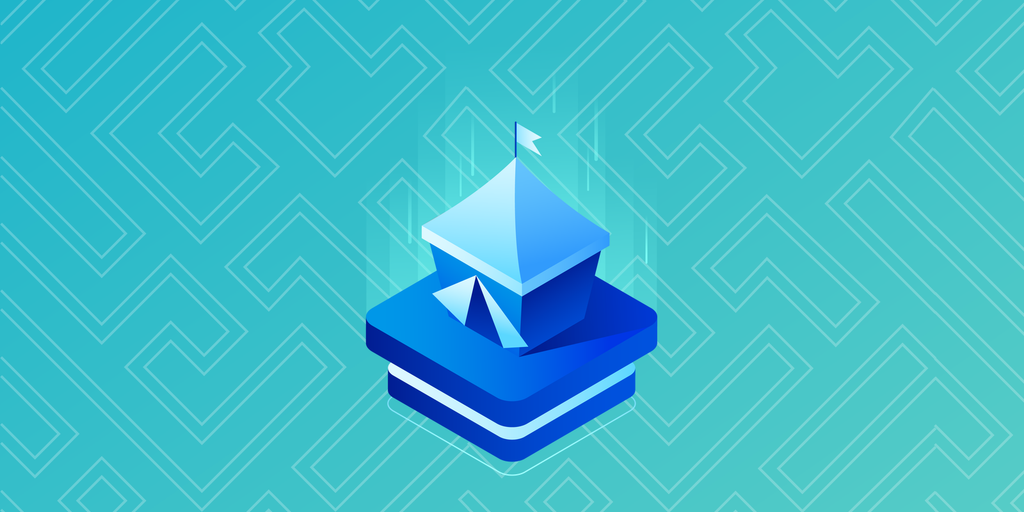
In brief
- Decentralized marketplaces are trustless networks that don’t rely on middlemen.
- They rely on smart contracts to help carry out transactions.
- They’re still in their early days, and most struggle to attract the necessary audiences to make a marketplace viable.
Centralized marketplace platforms have the ability to provide a level of service and reliability that mainstream users have come to expect, but may also lack transparency, charge high fees, and impose rules that users may not agree with. That’s where decentralized marketplaces come in. Below we explore what they are, how they work and give some examples of decentralized marketplaces in action.
What is a Decentralized Marketplace?
Decentralized marketplaces are what blockchains are all about. They allow people to interact and transact on a global, permission-less, and self-executing platform. Houses, hot sauce, and t-shirts can all be bought and sold without needing to trust a middleman.
At its core, a decentralized marketplace matches buyers and sellers of goods and services. Most of the important functionality like executing trades and releasing funds are controlled by a smart contract or program instead of a person.
It means that buyers and sellers agree to terms and when the terms are fulfilled, the transaction is automatically executed by the program. This makes decentralized marketplaces permission-less, resistant to censorship, and trustless. Because they tend to use cryptocurrency for payments they also have all the benefits of a global 24/7 payment system.
A Brief History
- Some of the first marketplaces on the internet that still exist today are Craigslist and eBay, which both launched in 1995.
- In 2011, the Silk Road is launched and while not a truly decentralized marketplace, is a marketplace where many users paid using Bitcoin.
- One of the longest-running and most well-known decentralized marketplaces is OpenBazaar, which started in April 2014 at a hackathon in Toronto as a project called “Dark Market.” The OpenBazaar of today is a fork of Dark Market.
- Syscoin is a blockchain network that focuses on decentralized marketplace applications and was also launched in April 2014.
What’s so special about it?
The biggest difference between a centralized and decentralized marketplace is the need for middlemen or intermediaries. Without middlemen, fees are less necessary and sometimes not required at all. The rules of the marketplace are also completely transparent and cannot be changed without the user accepting them. When services such as reviews, reputations, and dispute resolution are added, then decentralized marketplaces get many of the benefits of traditional marketplaces with added transparency and less fees.
There are many different types and setups for decentralized marketplaces. Here we will focus on blockchain specific marketplaces, marketplace applications, and marketplace platforms.
Marketplace Blockchains
Syscoin is a blockchain protocol or network that has a built-in platform for e-commerce and decentralized marketplaces. Users can take advantage of Syscoin’s application-specific blockchain, which has high transaction rates as well as high security because it is “merge-mined” with Bitcoin. Furthermore, the Syscoin blockchain is interoperable or compatible with other blockchains using the Syscoin Bridge.
Marketplace Applications
OpenBazaar is not its own blockchain, but instead acts as an application that is peer-to-peer or directly connects users of the application who want to trade. It has many of the benefits of being a blockchain such as not having to rely on a central authority, middlemen, or a central database, but since it is just for transacting trades and e-commerce, there is no need for miners or complex consensus algorithms.
OpenBazaar also has the benefit of no fees or restrictions on use. Anyone is able to download the software and start trading. The program uses multiple cryptocurrencies for payments such as Bitcoin, Bitcoin Cash, Litecoin, and Zcash.
Marketplace Platforms
Another way for decentralize marketplaces to exist is through a platform or protocol where developers create tools that allow other people to create their own peer-to-peer marketplaces. Origin Protocol and the Origami Network are two projects that are doing this using the Ethereum blockchain. By creating a system of standards and smart contracts, these platforms allow nearly anyone to spin up their own decentralized marketplaces. Both platforms also allow users easy and simple ways to manage listings, escrow, reviews, ratings, and buyers and sellers.
Marketplace Tokens
Some decentralized marketplaces have their own token to help facilitate how the marketplace functions. Syscoin users are able to create their own tokens on top of the Syscoin Platform called Syscoin Platform Tokens (SPT). Origin Tokens are intended to be used for governance decisions with Origin token holders being able to influence platform decisions. The token also rewards users, developers, and marketplace operators. Origami has its own ERC20 token called ORI. ORI is used for dispute resolution as well as in their decentralized payment system and allows for lower transaction costs.
What can you do with Decentralized Marketplaces?
Most decentralized marketplaces allow you to buy and sell nearly anything and pay using cryptocurrencies. Decentralized marketplaces let you save on platform fees and are accessible anywhere without needing to provide personal information or trust a central provider.
The Future
Since decentralized marketplaces are still nowhere near the size, scale, and usage of their centralized counterparts, the challenge for nearly all of them is to get more buyers and sellers on their platform. As with the rest of the crypto industry, adoption is key.
Stay on top of crypto news, get daily updates in your inbox.
Read More: decrypt.co









 Bitcoin
Bitcoin  Ethereum
Ethereum  Tether
Tether  XRP
XRP  Solana
Solana  USDC
USDC  Dogecoin
Dogecoin  Cardano
Cardano  TRON
TRON  Lido Staked Ether
Lido Staked Ether  Wrapped Bitcoin
Wrapped Bitcoin  Sui
Sui  Chainlink
Chainlink  Wrapped stETH
Wrapped stETH  Avalanche
Avalanche  Stellar
Stellar  Shiba Inu
Shiba Inu  Hedera
Hedera  Toncoin
Toncoin  Hyperliquid
Hyperliquid  LEO Token
LEO Token  Bitcoin Cash
Bitcoin Cash  Pi Network
Pi Network  Litecoin
Litecoin  Polkadot
Polkadot  USDS
USDS  WETH
WETH  Monero
Monero  Wrapped eETH
Wrapped eETH  Pepe
Pepe  Binance Bridged USDT (BNB Smart Chain)
Binance Bridged USDT (BNB Smart Chain)  Bitget Token
Bitget Token  Ethena USDe
Ethena USDe  Coinbase Wrapped BTC
Coinbase Wrapped BTC  WhiteBIT Coin
WhiteBIT Coin  Uniswap
Uniswap  Bittensor
Bittensor  NEAR Protocol
NEAR Protocol  Dai
Dai  Aptos
Aptos  Aave
Aave  OKB
OKB  Ondo
Ondo  Internet Computer
Internet Computer  Ethereum Classic
Ethereum Classic  BlackRock USD Institutional Digital Liquidity Fund
BlackRock USD Institutional Digital Liquidity Fund  Cronos
Cronos  Tokenize Xchange
Tokenize Xchange